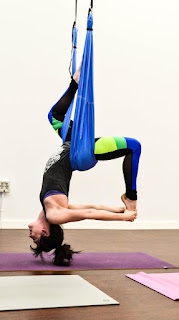Breaking Through the Plateau: How to Maintain Momentum When Progress Slows
Breaking Through the Plateau: How to Maintain Momentum When Progress Slows
Understanding Plateaus: A Natural Part of Growth
The journey toward any goal is rarely a straight, upward path. Often, there are periods of rapid growth followed by stretches of seeming stagnation, known as plateaus. When you hit a plateau, it may feel as though your progress has stalled, leading to frustration and a loss of motivation. But plateaus are a natural part of growth. They give us time to consolidate what we’ve learned, strengthen our foundation, and prepare for future breakthroughs.
Plateaus can carry both positive and negative messages. On one hand, a plateau may indicate that your body or mind is adjusting to a new level, building resilience in preparation for the next phase. On the other, it could signal the need for a shift in your approach to prevent burnout or repetitive strain. By embracing these pauses and understanding what they mean, you can use plateaus to your advantage, making them a part of the journey instead of an obstacle.
Maintaining Motivation: Strategies for Staying Inspired
When progress slows, maintaining motivation becomes crucial. Here are some powerful strategies to help you stay inspired and connected to your goals, even when you’re not seeing immediate results.
- Reconnect with Your “Why”
Sometimes, we lose motivation simply because we’ve lost sight of why we started. Revisiting the reasons behind your goals can reignite your passion. Take a moment to remember what inspired you initially. This reconnection with your “why” can provide a powerful mental boost, helping you approach the plateau with renewed energy. - Celebrate Small Wins
Progress doesn’t only come in big leaps; it often appears in subtle, small gains. By recognizing and celebrating these small wins, you reinforce your commitment. Take note of anything positive, from slight improvements in your skill to feeling more at ease with your practice. Celebrating small wins reminds you that you’re still moving forward, even if the progress feels slower than before. - Shift Your Routine
Monotony can sap motivation. A minor change to your routine can make a big difference. If your goal is fitness-related, try a new workout. If it’s a mental goal, incorporate a different mindfulness technique. These small shifts can renew your enthusiasm, helping you break through the boredom that often accompanies plateaus. - Visualize Success Daily
Visualization is a powerful tool for staying motivated. Spend a few minutes each day picturing yourself achieving your goal. Imagine the details—the feelings, the setting, the sensations of success. Visualization creates a mental connection between your current self and your future accomplishments, helping to maintain your drive. - Build a Support System
Surrounding yourself with people who understand your journey can be incredibly motivating. Friends, mentors, or even online communities can provide encouragement and accountability. When others are rooting for your success, it becomes easier to keep going, even during challenging phases.
The Role of Self-Discipline in Overcoming Plateaus
While motivation is essential, it’s not always reliable. That’s where self-discipline comes in. Self-discipline is the commitment to show up for your goals even when enthusiasm wanes. It’s the backbone of progress, providing structure when motivation alone isn’t enough.
Self-discipline is a skill that can be strengthened with practice. One way to do this is by setting small, manageable goals that build your confidence. Each time you follow through on a commitment, you reinforce your self-discipline, making it easier to stay consistent. As you practice, you’ll find that the discipline you develop helps you push through plateaus with resilience.
Journaling can also be a useful tool for exploring and strengthening self-discipline. By reflecting on what discipline means to you and examining any areas where you struggle, you gain insight into how you can improve. Here are some journal prompts to help deepen your understanding of self-discipline:
- What does self-discipline mean to me?
- In what areas of my life do I feel most disciplined, and why?
- What small action can I take today to strengthen my self-discipline?
These prompts encourage self-awareness and provide clarity on where to focus your efforts.
Embracing the Plateau: Reflecting on Progress and Preparing for Growth
Rather than viewing plateaus as setbacks, try seeing them as opportunities to reflect on your progress. Plateaus provide a chance to pause, look back, and appreciate how far you’ve come. Consider where you were when you began your journey. Reflecting on the progress you’ve made reinforces your commitment and reminds you of the dedication that has brought you to this point.
Plateaus also offer a chance to assess your goals. Sometimes, goals evolve as we do. Reflecting on whether your current goals still align with your values can help you determine if it’s time to adjust your path or double down on your efforts. Embracing plateaus as part of the process gives you the chance to refine your intentions, allowing your goals to grow with you.
Breaking Through: When It’s Time to Push Forward
While plateaus are valuable, there comes a time when you may want to actively push through them. Recognizing the difference between a productive plateau and one that’s become stagnant is key. If you feel that your progress has stalled despite consistent effort, or if you’re no longer feeling challenged, it might be time to make a change.
Breaking through a plateau doesn’t always require a drastic overhaul. Sometimes, small adjustments—like increasing your intensity, revisiting your strategy, or setting a new milestone—can be enough to spark new progress. It’s about knowing when to push forward and when to rest, allowing yourself the flexibility to adapt based on your needs.
Strengthening Self-Discipline with Yoga and Meditation
To maintain momentum and overcome plateaus, it’s essential to cultivate self-discipline in both body and mind. A challenging yoga flow can help reinforce this discipline physically, while meditation can deepen mental resilience.
- Challenging Yoga Flow for Focus and Strength
Try a yoga sequence that includes poses like Plank, Warrior III, and Boat Pose. These postures require balance, focus, and core strength, reinforcing both physical and mental endurance. As you hold each pose, concentrate on your breath, allowing it to ground you in the moment. Pushing through the difficulty of these poses can be an empowering reminder of your ability to stay disciplined. - Meditation for Boosting Self-Discipline
A meditation focused on self-discipline can help reinforce your commitment. Begin by sitting comfortably and focusing on your breath. With each inhale, visualize yourself embodying discipline, and with each exhale, release any doubts or resistance. Picture yourself meeting your goals with steady determination, reinforcing the mindset needed to move forward.
Reflecting on Progress with Journaling
Reflection is a powerful way to embrace plateaus and understand the role they play in your journey. Here are journaling prompts to help guide this reflection:
- What progress have I made so far, and what am I proud of?
Take time to appreciate the journey you’ve been on, acknowledging the growth and successes along the way. - How do I stay motivated when results aren’t immediate?
Explore the ways you’ve found strength in the past, and reflect on the methods that have helped you stay committed. - What steps can I take to break through this plateau?
Consider practical actions you can take to rekindle your momentum, whether by adjusting your approach, setting a new challenge, or embracing self-discipline.
These prompts can serve as a guide to reconnect with your purpose, reflect on your progress, and set a clear direction for moving forward.
Embracing the Journey: Moving Forward with Patience and Persistence
Plateaus are not a sign of failure; they are an invitation to grow, reflect, and reassess. By embracing these periods as part of the process, you allow yourself to develop patience and resilience, qualities that will serve you long after your goals are achieved. Progress isn’t always visible, but every effort contributes to the foundation of your success.
As you move forward, remember that each step—even the smallest one—brings you closer to your vision. With self-discipline, a positive mindset, and a willingness to embrace the journey, you can navigate plateaus with confidence, knowing that they are part of the path to lasting growth and transformation.
Additional Resources
For those who want to dive deeper into habit formation and sustaining their practice, check out the following articles in our New Year’s series:
- Overcoming the First Hurdles: How to Stay Consistent During the Initial Weeks
- Rest Days Done Right: Recharging Without Losing Momentum
- Breaking Through the Plateau: How to Maintain Momentum When Progress Slows
- Reigniting Your Fire: How to Stay Motivated Through the Year
- Balancing Self-Improvement with Life’s Other Responsibilities
- Yoga for Mental Toughness: Building Grit and Resilience Through Practice
- Visualizing Success: Using Meditation to Stay Focused on Your Goals
- Adapting to Change: How to Adjust Your Goals Without Giving Up
With patience, grit, and mindfulness, we can build habits that truly last.










